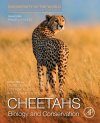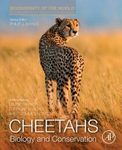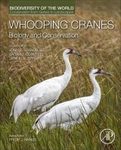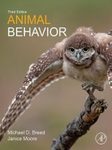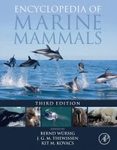About this book
Cheetahs: Biology and Conservation reports on the science and conservation of the cheetah both in situ and ex-situ, covering such aspects of cheetah biology and ecology as demography, density and feeding behaviour; genetic makeup and disease risks; and home range requirements and spatial utilization. The volume includes a broad range of topics, demonstrating the interdisciplinary nature of research and conservation efforts. The book begins with chapters on the unique physiology of this species, followed by the taxonomy and genetic status of the cheetah, leading into their behaviour and ecology.
Cheetahs: Biology and Conservation features contributions on the current and evolving threats to the species, which include habitat loss, declining prey base, human-wildlife conflict with livestock, illegal trade and newly-emerging threats, notably climate change. Cheetahs have been studied through physical examination, laboratory analysis, radio-tracking and human perceptions. Considerable progress has been made in developing strategies to improve their status, including changing farmers' attitudes and other efforts that have resulted in greater tolerance for the cheetah.
Status reports from around the regions are included as well as a better understanding of how international conventions (CITES, CMS, etc.), and the IUCN Cat Specialist Group have assisted in conservation planning. A section on conservation strategies begins with an overview of the similarities and challenges rural livestock farming communities play in assuring the cheetah's long-term survival, and continues by including several case studies of successful conservation programs in various countries throughout the cheetah's range. Chapters on the long-term research and role of captive cheetahs to conservation of the species are included, such as disease studies and reproductive strategies by North American and European experts on the subjects.
Contents
Foreword
Stephen O'Brien
1. A retrospective history of cheetah research and conservation efforts
Laurie Marker
2. History of the cheetah-human relationship
Benison Pang
3. Evolutionary history and paleoecology
Blaire Van Valkenburgh
4. Current status and distribution overview
Laurie Marker
5. Asiatic cheetahs in iran: decline, current status and threats
Mohammad Farhadinia
6. The cheetahs’ genetic history
Anne Schmidt-Küntzel
7. Cheetah specialization - physiology and morphology
Julie Meachen
8. Ecology of free-ranging cheetah
Laurie Marker
9. Cheetah behaviour
Bettina Wachter
10. Habitat loss and fragmentation
Muttullingam Sanjayan
11. The status of key prey species and the consequences of prey loss for cheetah conservation
Matt Hayward
12. Climate warming: the consummate threat to cheetah survival
Matti Tweshiningilwa Nghikembua
13. The impacts and drivers of human-cheetah conflict on livestock and game farms
Amy Jane Dickman
14. Pets and pelts: understanding and combating illegal trade in cheetahs
Patricia Tricorache
15. Use of livestock guarding dogs to reduce human-cheetah conflict
Amy Jane Dickman
16. Improved and alternative livelihoods: the link between poverty alleviation and biodiversity conservation
Mary Lynn Wykstra
17. Coordination of large landscapes for cheetah conservation
Larkin Andrew Powell
18. Cheetah conservation and educational programs
Courtney Hughes
19. Protection in protected areas
Bogdan Cristescu
20. Cheetah translocation and reintroduction programs: the past, present and future
Lorraine Boast
21. Global cheetah conservation policy: a review of international law and enforcement
Kristin Nowell
22. History and current status of cheetahs in zoos
Laurie Marker
23. Why keep cheetahs in zoos? - an integrative approach for cheetah conservation
Karin Schwartz
24. Clinical management of Cheetahs
Margarita Woc Colburn
25. History and current status of cheetah diseases and captive health
Karen A. Terio
26. Nutritional considerations for captive cheetahs
Katherine Whitehouse-Tedd
27. Reproductive physiology of the cheetah and assisted reproductive techniques
Adrienne Crosier
28. Communicating the conservation message—using ambassador cheetahs in education
Suzi Rapp
29. The use of remote camera trapping to study cheetahs
Ezequiel Chimbioputo Fabiano
30. Spoor tracking to monitor cheetah populations
Lorraine Boast
31. Mining black gold - finding, analysing and genetic insights from cheetah scat
Anne Schmidt-Küntzel
32. Field methods for visual and remote monitoring of cheetah
Femke Broekhuis
33. Spatial and landscape analyses
Leah Andresen and Richard Jeo
34. Capture, care and collaring of free ranging cheetahs
Laurie Marker
35. Social science methods to study human-cheetah coexistence
Niki Rust
36. Citizen science in cheetah research
Esther Van der Meer
37. PVA modelling
Bogdan Cristescu
38. Now you see them, soon you won't: statistical and mathematical models for cheetah conservation management
Sandra Johnson
39. Future directions in cheetah survival - in light of growing threats, new tools and conservation successes
Laurie Marker
Customer Reviews
Biography
Philip Nyhus is Director of the Environmental Studies Program at Colby College in Maine, USA. His interdisciplinary research bridges the natural and social sciences to address human interactions with the environment, including endangered species conservation and recovery, human-wildlife conflict, large landscape conservation, and spatial modelling. He is co-editor of Tigers of the World: The Science, Politics and Conservation of Panthera tigris (2010).
Dr Laurie Marker is founder and Executive Director of the Cheetah Conservation Fund and one of the world's leading experts on cheetah biology and conservation. Dr. Marker and her collaborators are widely recognized for their groundbreaking scholarship and applied cheetah conservation efforts. She has been active in cheetah research and conservation for more than 40 years and has developed extensive professional collaborations and relationships within the global cheetah community. As a leader in developing and publishing cheetah conservation strategies, Dr. Marker has co-authored historic genetic research papers, developed the Cheetah Species Survival Plan in North America, developed the International Cheetah Studbook, founded the Cheetah Conservation Fund in 1990, served as the vice chair of the World Conservation Union (IUCN) Species Survival Commission (SSC) Cat Specialist Group, and authored more than 65 peer reviewed publications on cheetah research and conservation.
Dr Lorraine Boast has nearly a decade of experience with cheetahs in Africa, serving as the Research Director for Cheetah Conservation Botswana.
Dr Anne Schmidt-Küntzel has several years of experience with cheetahs in Africa and is the Assistant Director for Animal Health and Genetics at Cheetah Conservation Fund.






